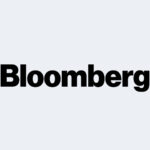Dissecting the Emerging Market Rally
A granular look at what has driven the rally to date and what could be next.

I have seen this narrative play out time and time again: analysts form a consensus on which countries / sectors are in favor, the consensus persists until it becomes a foregone conclusion, then, seemingly out of the blue, the trend reverses itself. Attempting to predict these reversals is the foundation for the entire philosophy of contrarian investing. A recent example occurred when out-of-favor emerging markets (EM) did an about face and started to rally while developed markets declined. While the consensus may be shifting back in favor of broad-based emerging markets, we believe investors should take a more granular look at which countries / sectors have driven the rally to date, and which could be next.
Year to date, the MSCI Emerging Markets Index has rallied 14.8% outperforming the MSCI USA Index and MSCI EAFE Index (a measure of developed markets) by 8.7% and 13.9%, respectively1. In late January 2016, two persistent headwinds became tailwinds for EM economies: the US dollar suddenly weakened and global commodity prices firmed. Surprisingly, the countries leading the EM rally had previously been the worst performers: Brazil, Peru, Thailand, Colombia, and Russia. Having been priced for extinction, these commodity dependent EM countries have risen from extremely low valuations.
According to Bloomberg, four out of the top five best performing countries in the MSCI Emerging Markets Index year to date (YTD) are commodity dependent countries (as of 8/31/2016). We define commodity dependent countries as net exporters of things like: oil, steel, mining products, coffee, soy beans, cane sugar, etc. The top performing sector of the MSCI Emerging Markets Index over the same time period was the Materials sector which returned 25% according to Bloomberg.
| Country | YTD Performance (as of 8/31/2016) | Commodity Dependent |
| Brazil | 62.2% | |
| Peru | 51.5% | |
| Thailand | 33.5% | |
| Colombia | 30.0% | |
| Russia | 25.7% | |
| Index returns are for illustrative purposes only and do not represent actual Fund performance. Index performance returns do not reflect any management fees transaction costs or expenses. Indexes are unmanaged and one cannot invest directly in an index. Past performance does not guarantee future results. Data from Bloomberg as of 8/31/2016 | ||
While the velocity of EM’s climb caught many investors off guard, more surprising is the fact that China and India have not risen nearly as much. This is where I believe the contrarian EM play may still have legs.
The extent to which low to no-growth EM countries can continue their rise is subject to debate. We focus our attention on what may be the strongest growth companies within emerging markets: Chinese internet and e-commerce companies. While these companies have recently performed well, we still believe they are undervalued relative to developed markets and the commodity dependent EM countries that surged.
Chinese internet companies exhibit many of the same characteristics of great companies we have here in the United States. The things I look for in a great company are: the company founder is the CEO, the company is in a sector of economic strength, there is a moat or high barrier to entry for competitors, and the management team has a large equity ownership in the company. We previously wrote about how Chinese internet companies tend to exhibit many of these characteristics. Based on this criteria, we believe Chinese internet companies offer the strongest long term growth prospects within China and broader emerging markets.
In order to further support this thesis, we have included earnings data from the past quarter for the top 10 holdings of the KraneShares CSI China Internet ETF (KWEB). It is important to note not only the strong results, but also how well these companies did versus analyst expectations.
Second Quarter (Q2) 2016 Estimated Earnings Per Share (EPS)* vs. Q2 2016 Actual EPS for KWEB Top 10 Holdings
| Company Name | % of KWEB Net Assets (as of 8/31/2016) | Q2 2016 Estimate EPS | Q2 2016 Actual EPS |
| Alibaba | 11.92% | 4.20 | 4.90 |
| Tencent | 10.76% | 1.01 | 1.21 |
| JD.COM | 8.28% | –0.18 | 0.29 |
| Baidu | 8.19% | 7.62 | 8.08 |
| Netease | 6.58% | 18.40 | 24.41 |
| Sina Corp | 4.58% | 0.15 | 0.27 |
| Ctrip.com | 4.52% | –0.13 | 0.12 |
| Vipshop | 4.10% | 1.00 | 1.12 |
| Tal Education Group | 4.03% | 0.41 | 0.78 |
| 58.com | 3.69% | –0.12 | 0.15 |
The analysts were not the only ones to underestimate the strength of China’s internet sector, lately a number of developed market internet companies have thrown in the towel while attempting to compete in China. The most public example came when the online transportation network, Uber, decided to sell its China division to their local taxi-hailing rival, Didi. Uber is a great company, however, Uber got beat by a competitor that knew the local market better and was also integrated within the ecosystem of two internet behemoths, Alibaba and Tencent, who directed users to Didi over Uber. Along with Uber, Wal-Mart.com recently decided to sell their China business to JD.com for similar reasons.
Here in the U.S. Chinese internet companies are often defined by which American company they are most similar to (i.e. Baidu is the “Google of China”). We believe this one-sided mentality leads analysts to underestimate the strength and ingenuity of the Chinese internet sector. There is a persistent valuation discount of Chinese internet companies to their U.S. equivalents, despite the fact that Chinese companies are growing faster. We believe the opportunity today is owning these companies before their incredible growth story becomes consensus.
KWEB Top 10 Holdings (as of 8/31/2016) 3yr Compound Annual Growth Rate (CAGR) vs. Comparable U.S. Companies
| Chinese Company | 3yr CAGR | U.S. Company | 3yr CAGR | Primary Business |
| Alibaba | 43% | Amazon | 21% | Ecommerce |
| Tencent | 33% | 52% | Social Media | |
| JD.COM | 64% | Amazon | 21% | Ecommerce |
| Baidu | 44% | 14% | Search | |
| Netease | 39% | Yahoo | 0% | Portal |
| Sina Corp | 18% | 91% | Microblogging | |
| Ctrip.com | 36% | Expedia | 18% | Travel |
| Vipshop | 111% | Groupon | 10% | Flash Sales |
| Tal Education Group | 113% | 2U | 89% | Online Education |
| 58.com | 102% | Craigslist | – | Classified Advertisements |
| Average: | 60% | Average: | 35% |
While some analysts might recommend investors chase returns through buying broad EM funds with heavy allocations to countries like Russia and Brazil, and others might call the top of the EM rally and a pivot back to developed markets, we believe the Chinese internet sector represents a long-term growth story that is only just beginning to catch on.
- Data from Bloomberg as of 8/31/2016.The MSCI Emerging Markets Index captures large and mid cap representation across 23 Emerging Markets (EM) countries. With 834 constituents, the index covers approximately 85% of the free float-adjusted market capitalization in each country. The MSCI USA Index (USD): The MSCI USA Index is designed to measure the performance of the large and mid cap segments of the US market. With 622 constituents, the index covers approximately 85% of the free float-adjusted market capitalization in the US. The MSCI EAFE Index: is an equity index which captures large and mid cap securities across 21 Developed Markets including Europe, Australasia, and the Far East excluding the US and Canada. With 930 constituents, the index covers approximately 85% of the free float-adjusted market capitalization in each country.










